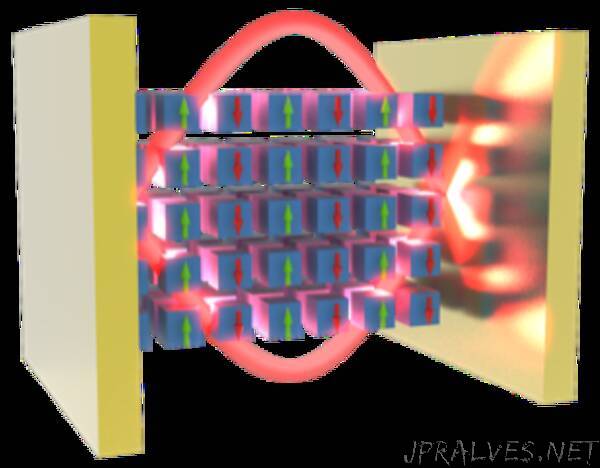
“From The City College of New York’s Center for Discovery and Innovation and the Physics Department comes news of a new type of magnetic quasiparticle created by coupling light to a stack of ultrathin two-dimensional magnets. This achievement sprouting from a collaboration with the University of Texas at Austin lays the foundation for an emergent strategy to artificially design materials by ensuring their strong interaction with light.
“Implementing our approach with magnetic materials is a promising path towards efficient magneto-optical effects,” said CCNY physicist Vinod M. Menon, whose group led the study. “Achieving this goal can enable their use for applications in everyday devices like lasers, or for digital data storage.”
Dr. Florian Dirnberger, the lead author of the study, believes that their work exposed a largely unexplored realm of strong interactions between light and magnetic crystals. “Research in recent years brought forth a number of atomically flat magnets that are exceptionally well-suited to be studied by our approach,” he noted.
Looking ahead, the team plans to extend these investigations to understand the role of the quantum electrodynamical vacuum when quantum materials are placed into optical cavities. “Our work paves the way for the stabilization of novel quantum phases of matter that have no counterpart in thermodynamic equilibrium,” commented Edoardo Baldini, assistant professor at The University of Texas at Austin.
The development is reported in the current issue of “Nature Nanotechnology,” in a paper entitled “Spin-correlated exciton-polaritons in a van der Waals magnet.”
The research was funded by the National Science Foundation, Army Research Office and the CREST-IDEALS Center at CCNY.”
